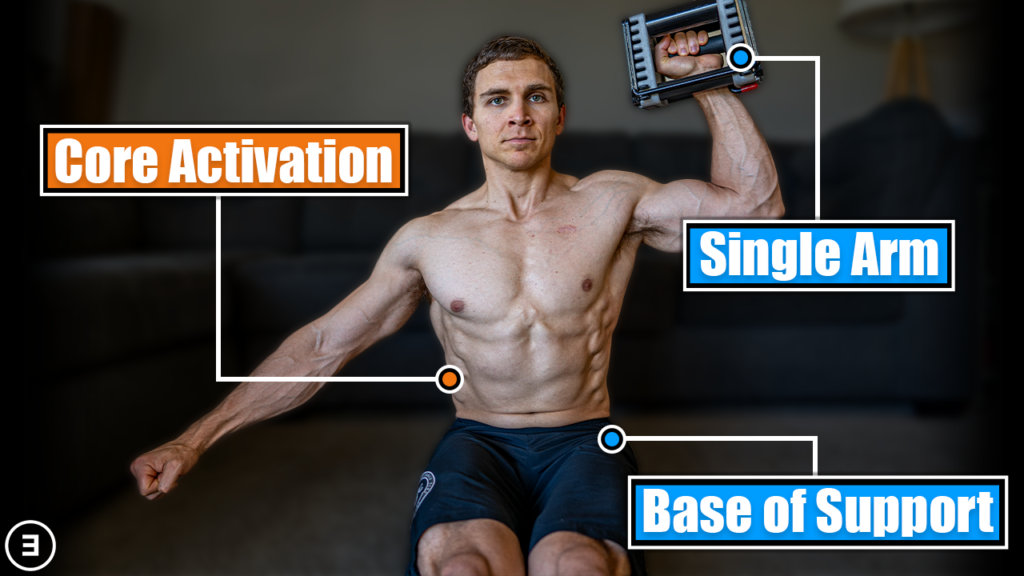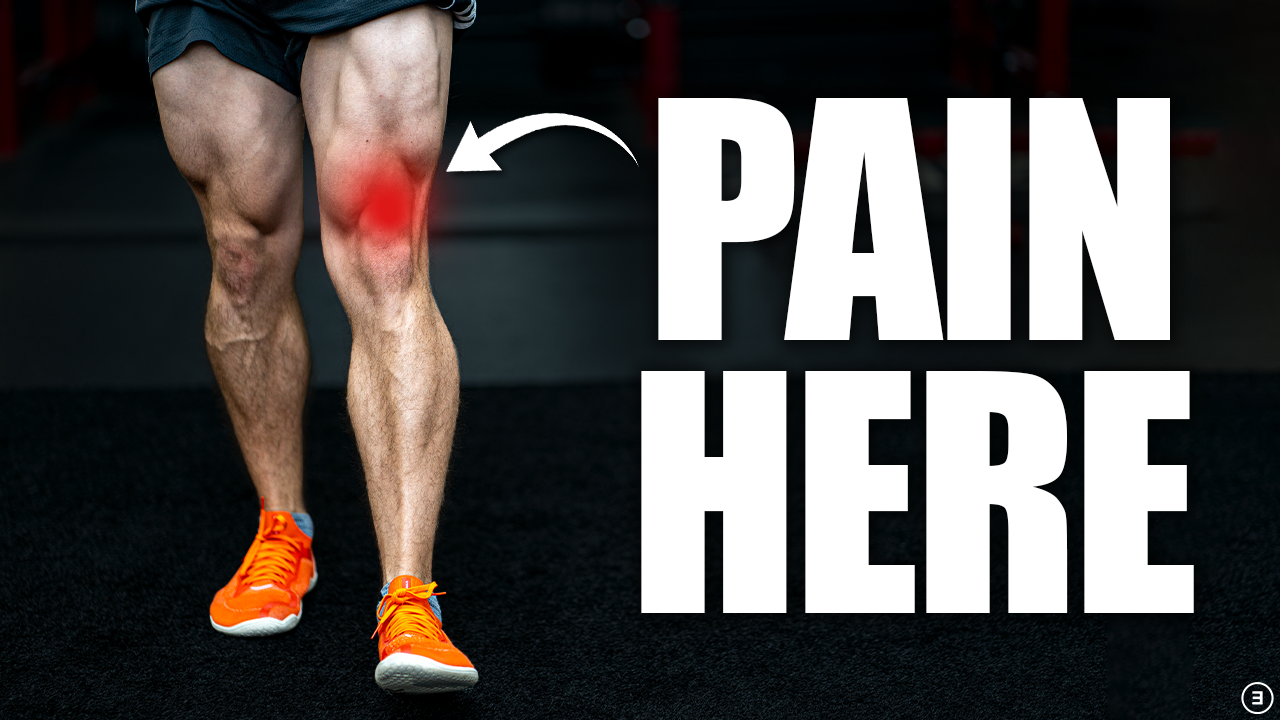The purpose of this blog is to discuss two practical recommendations for increasing core activation during your resistance training program.
Looking for rehab or performance programs? Check out our store here!
Increasing Core Activation
While the core is often trained with the intention of improving aesthetics, pain, and/or performance, best training practices for this region have yet to be established since there isn’t even a ubiquitous definition of what the “core” constitutes. For the purpose of this blog, the core will consist of the more superficial muscles between the pelvic floor and diaphragm, such as the rectus abdominis, external and internal abdominal obliques, and lumbar erector spinae. Two of the easiest ways to increase the activation of these muscles without compromising the adaptations elicited with an appropriate resistance training program include altering the base of support of a movement or utilizing an asymmetrical load.
Unstable Surfaces
When most people read “altering the base of support” of an exercise, they probably think of training on an unstable surface like a bosu ball or foam pad. However, that is not the goal here. Those devices might have some utility for very specific purposes, but for regular resistance training, they are not necessary and are actually often counterproductive. Behm and colleagues perfectly state that “unstable devices should not be utilized when hypertrophy, absolute strength, or power is the primary training goal, as force generation, power output and movement velocity are impaired and may be insufficient to stimulate the desired adaptations.”
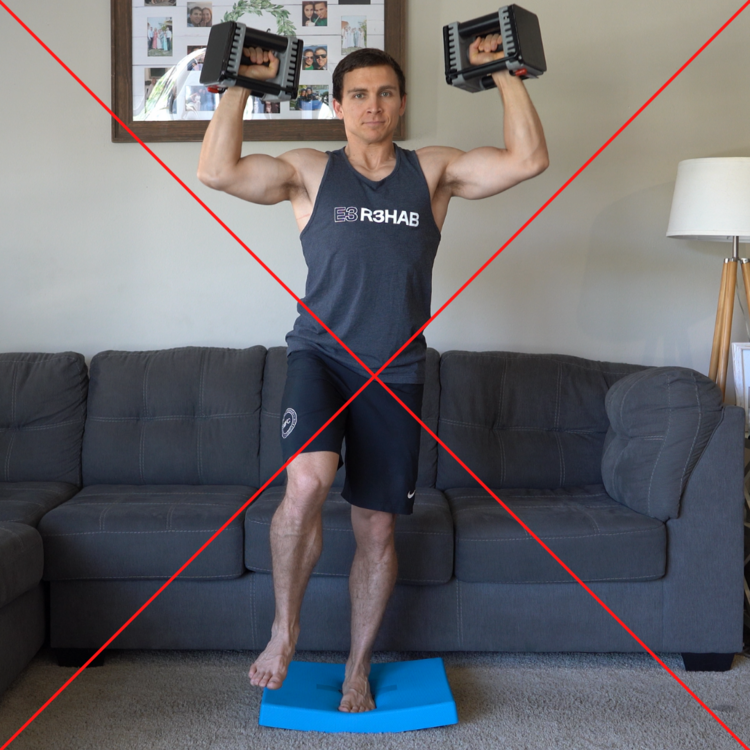
Altering the Base of Support for Increasing Core Activation
So what is actually meant by this statement? It’s actually quite simple. Think about going from a seated overhead press to a standing overhead press. That’s it! Saeterbakken and Fimland showed a significant increase in rectus abdominis activity by incorporating this small change.
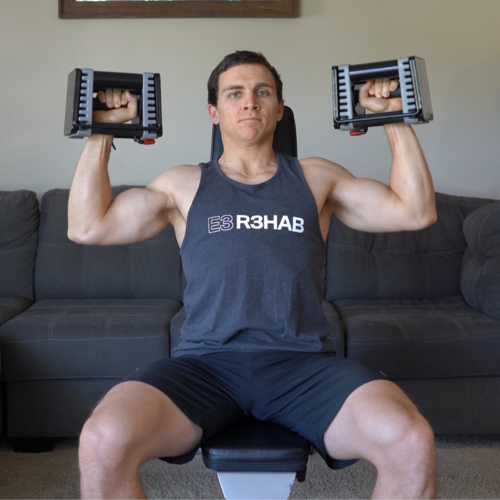
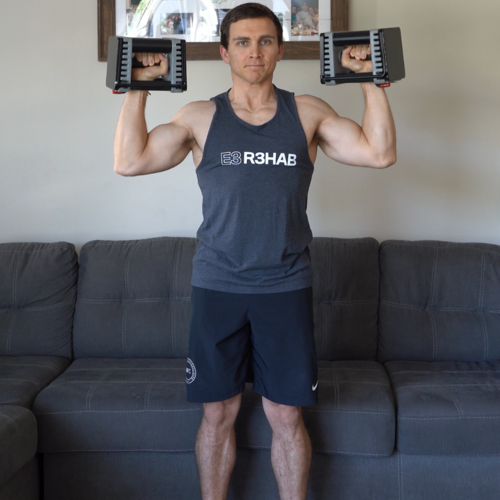
Using Asymmetrical Loads for Increasing Core Activation
You can take this one step further by using one dumbbell rather than two to create an asymmetrical load. The same paper just mentioned showed a significant increase in external oblique activity by executing the exercise unilaterally rather than bilaterally. A different paper by Behm and colleagues in 2005 demonstrated that this can also potentially increase lumbar erector spinae activity.
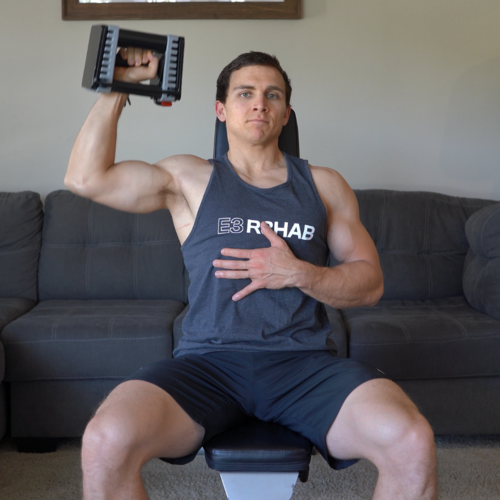
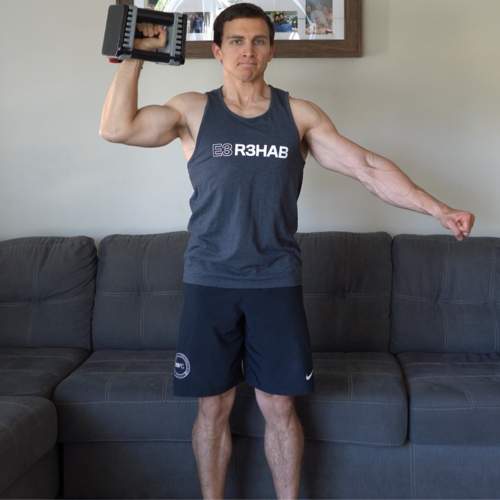
When you think about it, this makes intuitive sense. When you do something like a suitcase carry (walking with a weight in one hand), the weight is acting on that same side to pull you towards the ground. In order to resist this motion so that your trunk remains upright, you have to sufficiently activate the muscles on the opposite side. Essentially the same thing is happening when you perform a unilateral overhead dumbbell press.
Practical Application
So how can you apply this information in your own training? Well, you can increase the activation of your core musculature by using either one of these strategies independently, or simultaneously.
Two other viable options for changing the base of support include half kneeling and long sitting (Z Press).
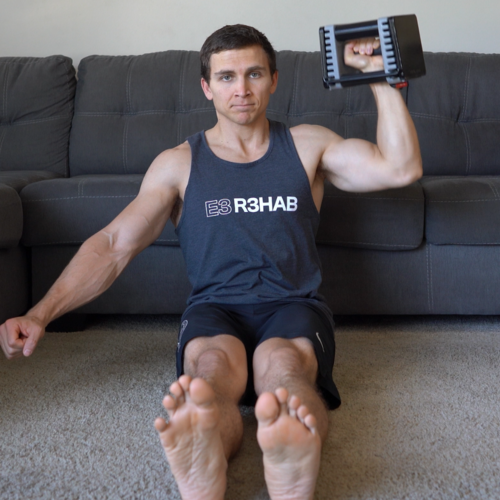
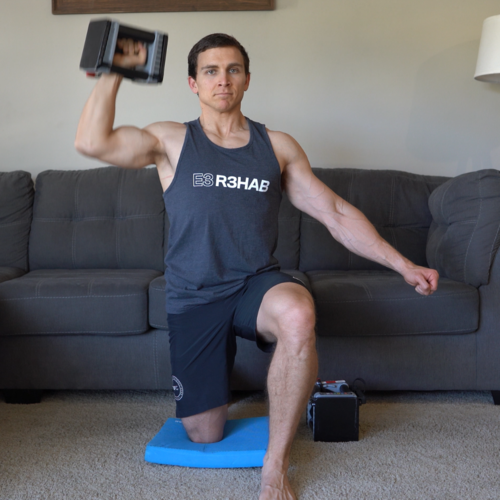
However, in either exercise, you don’t want it to feel so unstable that you feel like you’re challenging your trunk more than the target tissue (deltoids in this case).
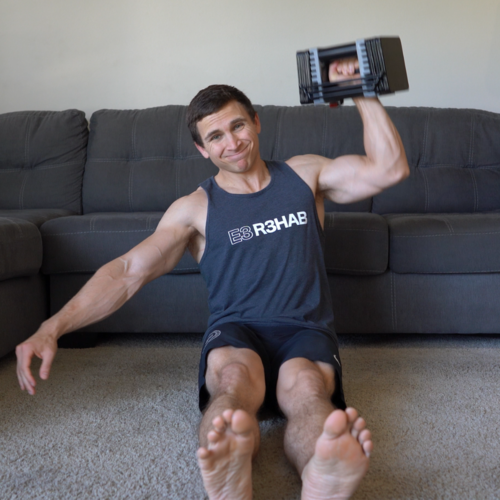
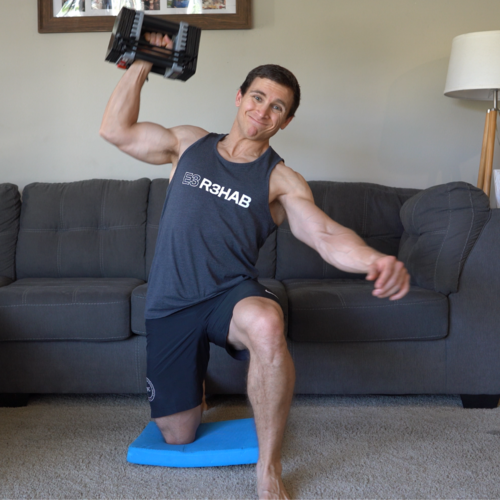
You also don’t need to do one of these variations every single time because a well balanced program that incorporates compound movements with free weights will already adequately stimulate all of your trunk musculature. Think of these recommendations as ways to supplement your training on occasion, especially if you’re short on time and want to skip isolated ab work at the end of a workout.
Looking to improve your knee strength, range of motion, and power to enhance your function and performance? Check out our Knee Resilience program!
Want to learn more? Check out some of our other similar blogs:
Thanks for reading. Please leave any questions or comments below.


